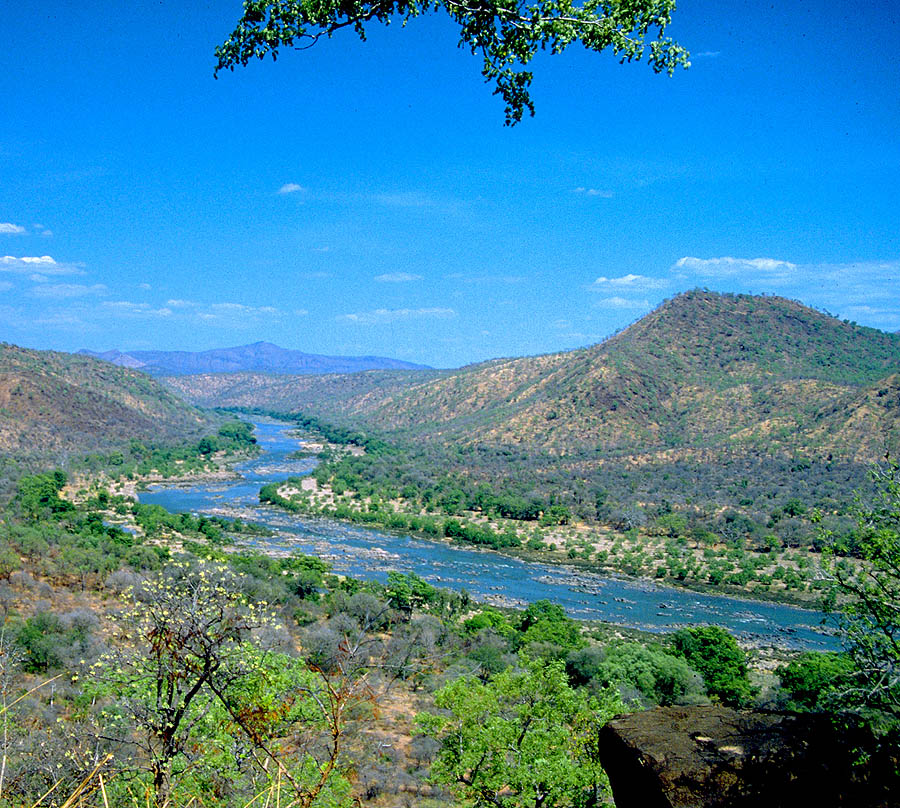 (1989-1997) Never before in my life had I been so totally excited, as the first time I saw the fabled Kaveri River, where the big humpback mahseer is found. All I knew of mahseer was from books and magazines; so that I was to be the first Scandinavian angler to try and do battle with this magnificent fish was almost unbelievable.
(1989-1997) Never before in my life had I been so totally excited, as the first time I saw the fabled Kaveri River, where the big humpback mahseer is found. All I knew of mahseer was from books and magazines; so that I was to be the first Scandinavian angler to try and do battle with this magnificent fish was almost unbelievable.
The adventure and these godly beautiful fish, and the surrounding jungle and wildlife in the South Indian jungle, mark you for life and drives you to return and experience it again and again - which I have now done 9 times. Every trip has in itself been unique, never a dull moment even though the mahseer can be ever so wary.
History
The mahseer, Queen of the River, is indeed royalty in the world of sports fishing. A fish that was capable of making an Englishman regard the "lordly salmon's sporting qualities as inferior, in comparison" is certainly high praise from Mr. H. S. Thomas in the year 1873 – the Isaac Walton of Indian angling literature.
In 1903 the term "Mighty Mahseer" appeared for the first time, incorporated in the title of a book on Angling in India by a man, who used the nom-de-plume "Skene Dhu" – but even generations before this, the mahseer found its place as a highly treasured game fish, because of its superb fighting qualities.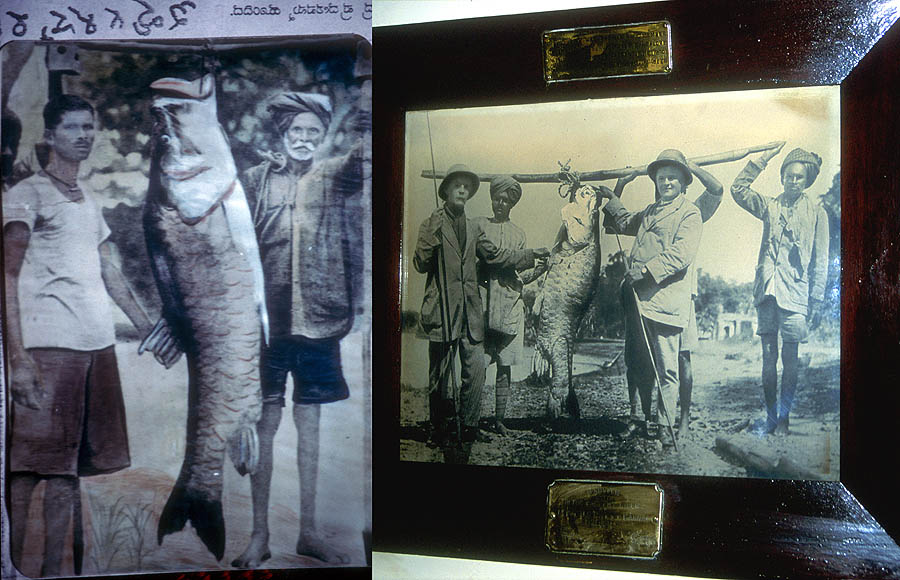
One of the first recorded biggies was caught in 1870, a fish of 110 lbs, caught on hand-line by G. P. Sanderson in the Kabini River, as tributary to the Kaveri River. The first mahseer to enter the book of records of fish caught on rod and reel was caught in the Kaveri River near Srirangapatnam in 1906 by Mr. C. E. Murray Aynsley. This mahseer weighed 104 lbs, and a commemorative stone was reportedly erected on the bank of the river, where the fish was landed.
In the following 40 years, up to 1947, more than 10 fish over 100 lbs were recorded from the Kabini-Kaveri system. One of the most famous catches was by Major J. S. Rivett-Carnac in 1919 in the Kaveri River, with a mahseer weighing 119 lbs. This fish headed the record list for more than 25 years, until J. Dewet van Ingen beat it by only 1 lb. 120 lbs of sheer dynamite – a record, which still stands today. Since then, there has been only one record of mahseer over 100 lbs, but the locals have landed giants of 100-112 lbs on hand-lines.
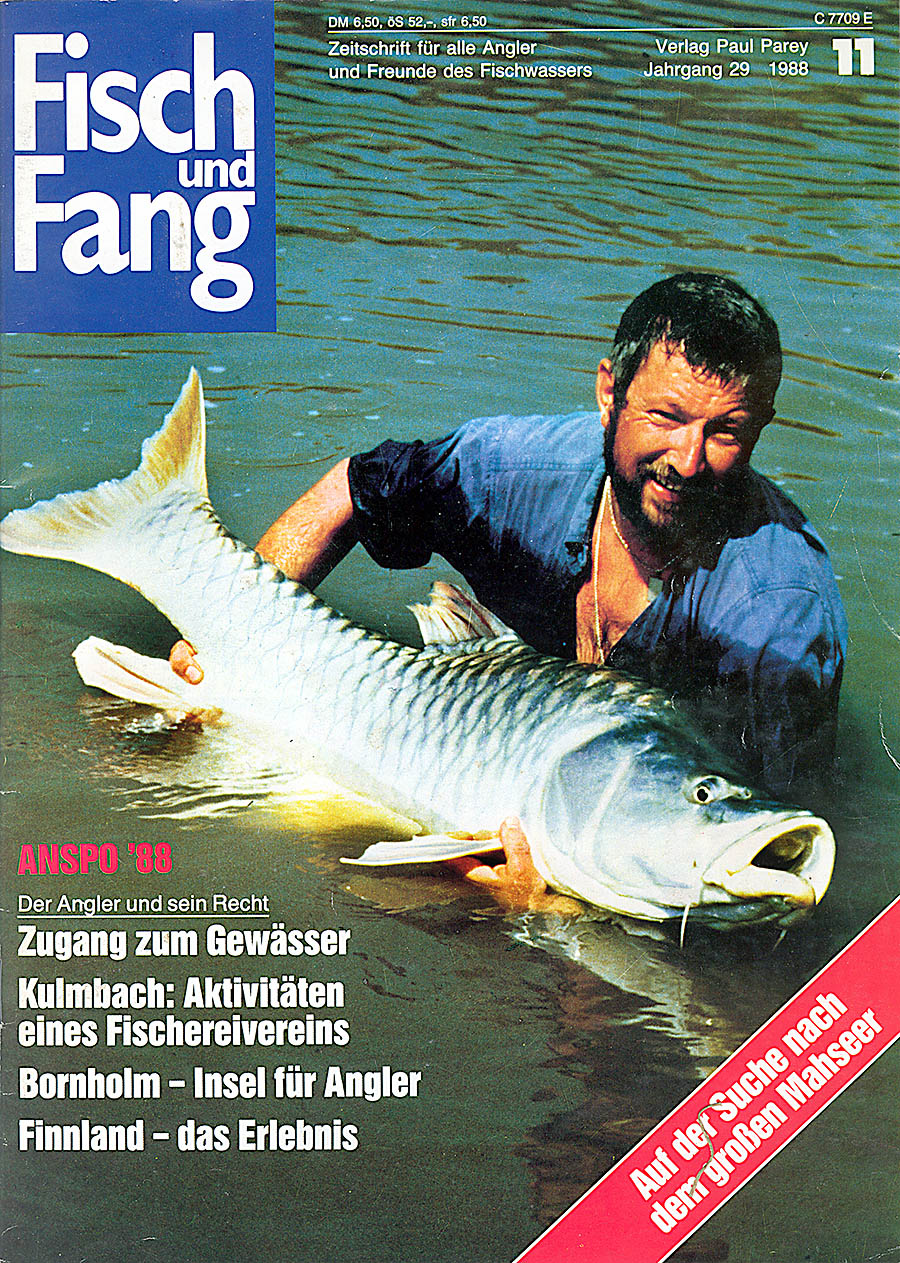 Before the ABU team in 1978 "refound" the mighty mahseer, the fishing had declined rapidly, when the British left India in 1947. But after these three anglers adventurous story, more French, British and Germs got their appetite for mahseer wetted, and suddenly the mahseer was found in many sports fishing magazines after having been virtually forgotten for 30 years.
Before the ABU team in 1978 "refound" the mighty mahseer, the fishing had declined rapidly, when the British left India in 1947. But after these three anglers adventurous story, more French, British and Germs got their appetite for mahseer wetted, and suddenly the mahseer was found in many sports fishing magazines after having been virtually forgotten for 30 years.
Even though there has been only the one 100 lbs during the last 50 years, several fishermen have had wonderful catches; for example, John Wilson who had the distinction of catching a 92 and an 81 lbs on the same day. Other known British adventure anglers have conquered the big mahseer, namely Paul Boote with 75 lbs, Jeremy Wade with a 95½ lbs, John Watson with an 88 lbs, and Andy Davison with a 95 and an 88 lbs.
Writing history
After many trips to the Kaveri River I have amassed a good portion of knowledge and experience in this field, and on top of this, I was lucky enough to witness, when history was written - the catch of the first mahseer over 100 lbs in 45 years.
So many mahseer ranging from 90 to 98 lbs have been caught the past 20 years, but the 100-pound barrier seemed impenetrable, until Steve Harper landed a long, beautiful golden mahseer of 104 lbs.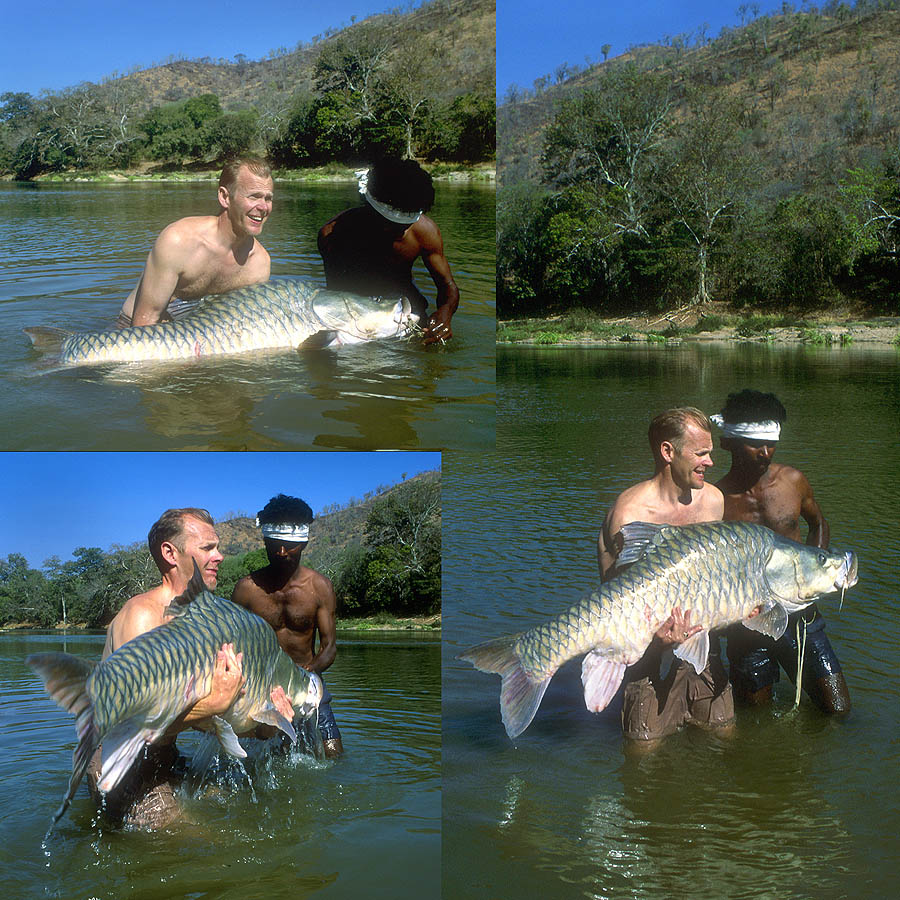
Biology
The humpback mahseer, being closely related to barbel in the big family of cyprinids, is scientifically named Tor mussullah. The name mahseer, itself, is not without relevance, as it roughly translated means "great mouth" (maha meaning great, hence Maharaja). The huge, protrudable vacuum-cleaner like mouth is an impressive instrument, and equipped with closely packed pharyngeal teeth, it is able to crush water-snails, crabs and other crustaceans, as well as most of the hardware from an anglers tackle box. The mouth is also muscular and very powerful, the lips resembling hard rubber, and with this device the mahseer is capable of killing fairly large fish by sheer compression. Still, the lips are extremely sensitive, and the mahseer can actually pick up single rice grains, and that at an incredible speed.
The mahseer looks much like a huge cross between a roach and a barbel.
Distribution and timing
Even though it is not especially difficult to get a humpback mahseer in the Kaveri River at present, this mahseer is far from common in the waters of India. Years of poisoning, dynamiting, netting and hydroelectric plants have all put this big-scaled cyprinid on the verge of extinction. The best time of year to fish for humpback mahseer in southern India is in the months January, February and March, where the water level is at its lowest, and fish location is easier.
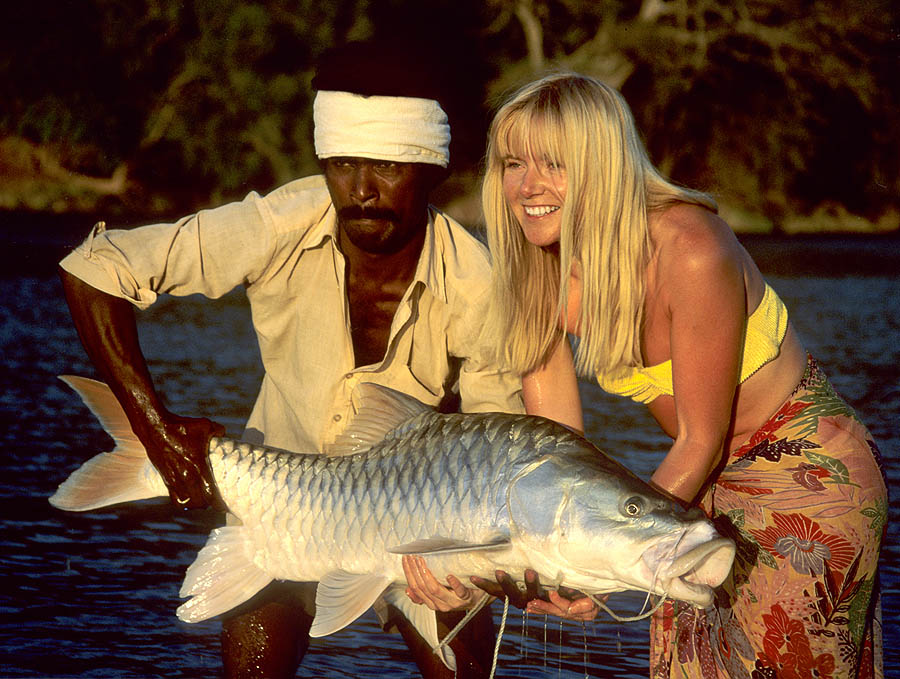 In River Ganges, the Himalayan mahseer, Tor putitora, have been seen to about 150 lbs in sacred pools, and a big number of 30 to 80 lb+ have been caught in other areas of the river. The best time to fish Himalayan mahseer in northern India and Nepal is right after the monsoon, when the water starts to drop rapidly and get clearer. Especially in the upper tributaries the fishing is very good, but the timing is extremely crucial. Weather conditions obviously determine the best periods for fishing, and they usually lie in early to late autumn.
In River Ganges, the Himalayan mahseer, Tor putitora, have been seen to about 150 lbs in sacred pools, and a big number of 30 to 80 lb+ have been caught in other areas of the river. The best time to fish Himalayan mahseer in northern India and Nepal is right after the monsoon, when the water starts to drop rapidly and get clearer. Especially in the upper tributaries the fishing is very good, but the timing is extremely crucial. Weather conditions obviously determine the best periods for fishing, and they usually lie in early to late autumn.
Other good places in India, are the Beas River and Corbett National Wildlife Park. The Beas River, near Mandi, has produced mahseer to 140 lbs in the past, but due to excessive and uncontrolled netting and dynamiting, the river fell into decline. However, much work has been put into saving the mahseer there, from the mid-seventies and onwards, and the future looks a little bit brighter for the mahseer now. Paul Boote has caught small mahseer in the Beas River in the 70'ies, and in the 90'ties reports of bigger fish have come through the grapevine.
Other types of mahseer live in Burma, Thailand, as far as Iraq, Iran, Africa and Turkey, and China.
Kaveri/Cauvery River
In southern India, the best fishing for mahseer is in the Kaveri River. Here the good fishing is mostly due to the hard work and determination of the late Wildlife Association of South India. WASI has fought to keep the water free from dynamiting and netting, and at the same time provided the local communities with alternative food sources; both agriculture and fish farming. They saved the mahseer just before it was too late, along with the nature and wildlife along this beautiful river.
The Kaveri River springs from the high mountains in Karnataka, and crosses the Indian sub-continent from west to east. The most interesting part of the river lies in the sub-tropical jungle near Mysore. Imagine fishing for leviathan mahseer surrounded by wild elephants, stealing monkeys, poisonous spiders and scorpions, big eagles and vultures...
I cannot express it more clearly than saying it is like fishing in a zoo, where all the animals are let out.
On top of this, the sounds, smells and adventurous atmosphere of the jungle conclude the lovely picture, that is so hard not to miss, once experienced.
The Kaveri River holds several varieties of mahseer, and possibly more than one species, though that is not confirmed. The biggest of them are the golden and silver mahseer; then the extraordinary black mahseer; and then the green/turquoise and the orange mahseer. These mahseer types interbreed, and some very specially coloured varieties are occasionally found.
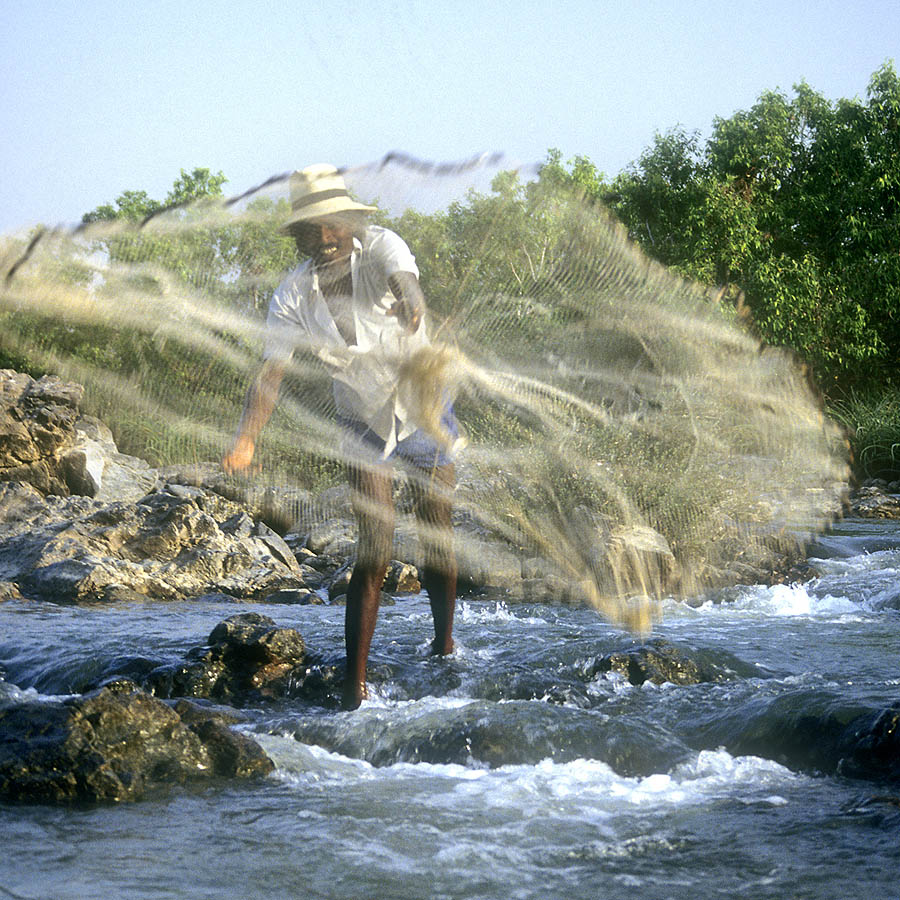 Techniques and location
Techniques and location
We catch mahseer in both slow moving water and the fast rapids. One thing is evident, though, and that is the fact that mahseer are shy and prefer deeper water. I have seen mahseer chase prey in the surface, and I have seen them spawn noisily in the bays, but those occasions are rare, and I have yet to see a wild mahseer caught in shallow water.
In the Kaveri River the mahseer primarily predates on smaller fish, crabs and other crustaceans.
The fish we use for bait are various barbel and carp types up to about a pound in weight, but the mahseer can gulp much larger fish - for example a 40 lbs mahseer can easily swallow a 5 pound carp. The baitfish are called "chilwa", no matter what species, and these bait fish work very well in fast water. Actually, the very biggest mahseer have fallen for a live fish-bait. You can either catch the small fish yourself on light tackle, or you can get the guides to catch them with nets.
However, the best catching bait is, without a doubt, crabs, which seem to provoke an instant reaction from mahseer. The crabs are found under rocks in muddy areas, and can be difficult for the untrained eye (and fingers) to locate, but the guides are very proficient at finding and collecting them. The claws are broken off, and the crabs are usually kept in your pocket - to much amusement when they try and escape. The crab are usually just hooked through a soft part of their shell, but we have refined the technique a little by putting a piece of line or an elastic band around the body of the crab, and then simply hanging it in the bow of the hook, leaving the hook point completely free.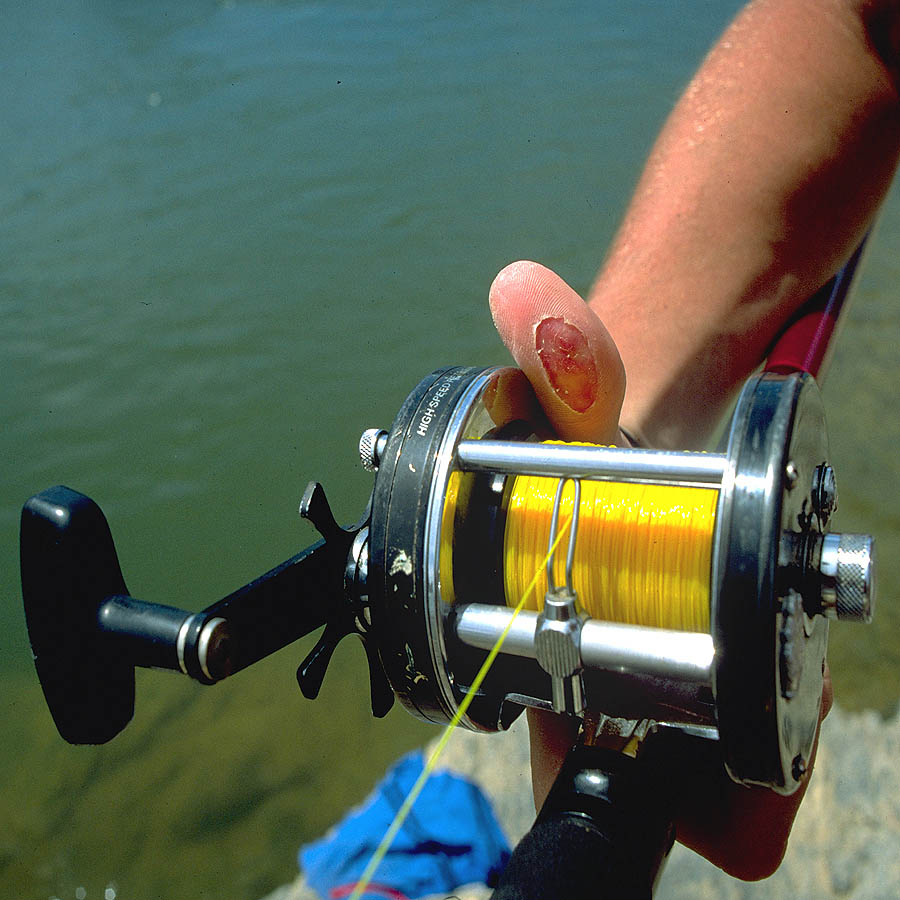
The ragi paste is probably the most used bait, because it is easy to get hold of, and easy make. Ragi paste baits are made from the ragi flour, which is a type of millet, and flavoured with yeast or cumin. This millet is very glutinous, which makes it like modelling-clay after being boiled. The ragi baits are boiled in apple sized balls, and generally used in that size with a large single hook moulded into it. This bait is good for catching all sizes of mahseer, from kindergarten size (5 lbs) to the monsters.
We always use big single hooks sizes 5/0 to 8/0. It is imperative that the hooks are strong, kept sharp and durable. Many big fish are lost due to loss of hook-hold, or broken or bent hooks.
The line should be as abrasion resistant as possible. That usually dictates a choice of thick lines (meaning 40-50 lbs / 0.50 to 0.65 mm), but that is for most part not a problem, as long casting is seldom necessary. We have, unsuccessfully, tried out various braided lines, but as strong as they are in a straight pull, they really suffer, when they hit rocks. And rocks there are plenty of in the Kaveri.
We use spiral leads for weight. These leads are simply wound onto the line and squeezed tight. The advantage of using a spiral leads, is that the lead will move to the hook if the rig gets snagged, and with the lead close to the hook, it is easier to "shoot" the rig free. It is possible to buy these leads, but the easiest is to bring some lead plates, which can be cut and hammered whilst in the jungle. We have found, through much hard experience, that the more complicated the rigs get, the more can (and inevitably will) go wrong.
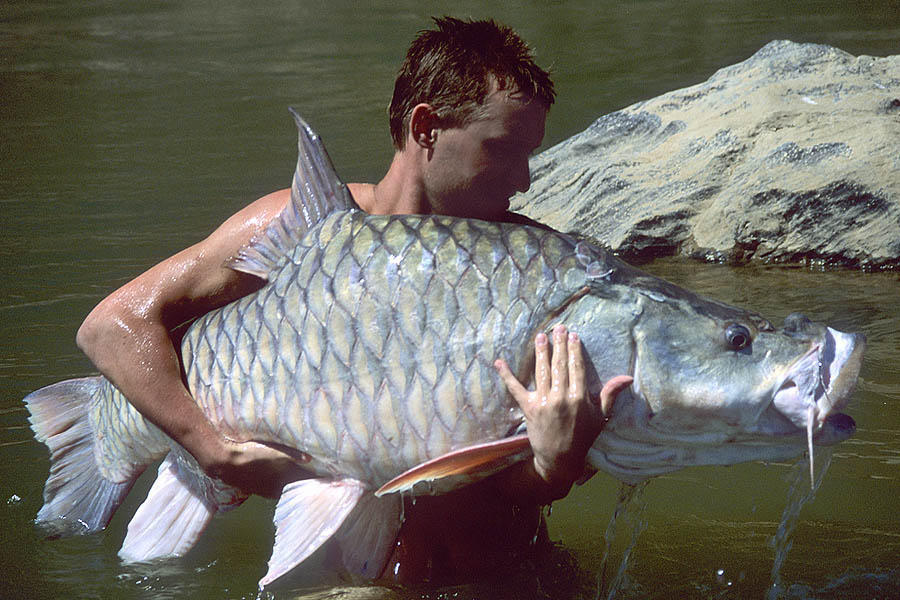 We have tested just about all types of rods - even 1½ lb match rods have caught 95 lbs mahseer - but many have broken. In my estimation, the best rods for the job are long up-tide rods 20-30 lb. The reason for using long rods is to keep the line free of rocks, especially when you have to swim to get the fish, which happens regularly. 100% carbon fibre rods are good for many things, they are certainly light, but they are also brittle. Through a fight of an hour, in and out of the water, swimming and running, the rods often get knocked on rocks, so it is most advisable to use composite rods.
We have tested just about all types of rods - even 1½ lb match rods have caught 95 lbs mahseer - but many have broken. In my estimation, the best rods for the job are long up-tide rods 20-30 lb. The reason for using long rods is to keep the line free of rocks, especially when you have to swim to get the fish, which happens regularly. 100% carbon fibre rods are good for many things, they are certainly light, but they are also brittle. Through a fight of an hour, in and out of the water, swimming and running, the rods often get knocked on rocks, so it is most advisable to use composite rods.
I have also seen many reels in use, and in general the best are multipliers of good quality. Whenever a big mahsser has been fought on a fixed-spool reel, the spool-pin was bent afterwards. The reels, that have made the best impression, are ABU's Ambassadeur 7000C and 9000C.
As you have probably learned already, it is of the utmost importance to use as good quality tackle as possible, because when a monster mahseer takes the bait at rocket speed, removes a good part of the skin on your thumb, and runs down through rapids and waterfalls, the gear and tackle (and you) are tested to the absolute limit - and beyond...
Of course, the dangers involved in fishing for mahseer are obvious, but after a fight of 1½ hour in dramatic jungle surroundings, where vultures and monkeys howl at you, there is nothing like lifting out of the water the fish of your dreams.
My dream fish were mahseer weighing 92, 90½, 73, 69, 50, 44, 43 lbs...